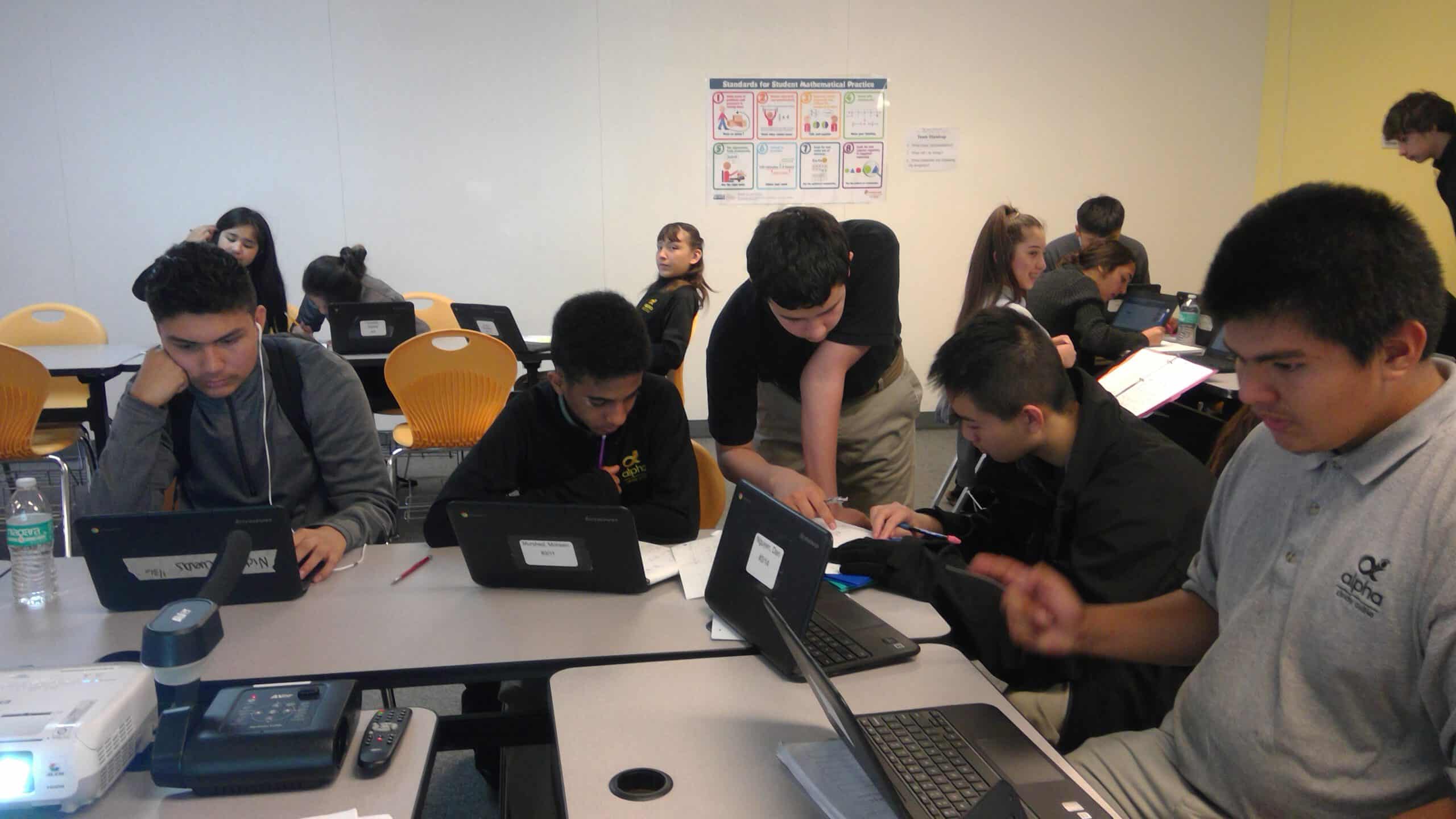The new report “How to create higher performing, happier classrooms in seven moves: A playbook for teachers” tells stories of teachers who improved student engagement and academic results by introducing seven specific, practical moves into their classrooms that replicate the successes of top managers in cutting-edge workplaces. For the next three months, I’ll be doing deep dives into each of these important moves.
The third move for creating a dynamic classroom is to encourage teaming.
Harvard Business School professor Amy Edmondson is known for her research on teaming, the idea that in today’s fast-paced world, organizations cannot rely on stable teams; instead, they must embrace a culture of teaming—people coming together impromptu to work on a shifting mix of projects with a shifting mix of partners. She wrote:
Teaming is about identifying essential collaborators and quickly getting up to speed on what they know so you can work together to get things done. This more flexible teamwork (in contrast to stable teams) is on the rise in many industries because the work—be it patient care, product development, customized software, or strategic decision-making—increasingly presents complicated interdependencies that have to be managed on the fly. The time between an issue arising and when it must be resolved is shrinking fast. Stepping back to select, build, and prepare the ideal team to handle fast-moving issues is not always practical. So teaming is here to stay.
According to Edmondson, teaming is more like a pickup basketball game than plays run by a team that has worked together for years. She believes that teaming is not only something that some individuals and companies have to do, but it’s something that they should want to do. Organizations and people who learn to team are able to solve complex, interdisciplinary problems; develop a more unified culture; complete a wider range of assignments; and manage unexpected events. This is the type of collaboration we have in mind when we use the word “teaming.”
During the 2015–16 school year, Kelly Kosuga, a 9th-grade Algebra I teacher at Cindy Avitia High School, part of the Alpha Public Schools network in the San Francisco Bay Area, switched from a Station Rotation to a Flex model of blended learning that encouraged peer collaboration. At first she told students to “work together,” but then realized that a more accurate description of what she had in mind was for team members to serve as each other’s first line of defense. She coached them to feel comfortable asking for and giving support when they needed it.
To get the classroom and teams in place, Kelly tried various sizes of teams with different table layouts. She experimented with dividing her roughly 40 students per class into groups of 10, eight, and four. She tried long, extended table layouts and “V”-shaped table layouts. Within a few months, she settled on teams of eight seated facing each other in a square arrangement of the tables.

Kelly changed up the teams each month. In general, students responded favorably to the team setup. In an end-of-semester survey, they said:
- “Different teams allow us to work with new people, which I personally find fun.”
- “I actually like it and my group can talk and stuff like that, but we still finish the work.”
- “I really like how we are in groups and just help each other.”
Some students, however, complained that the monthly switches were hard. A few also noted that the changes caused confusion and required too much adaptation.
Each month, Kelly also asked for volunteers to serve as the team leads. She offered a brief training to help team leads understand how to serve their teams.
Kelly also used team builders to help the students get to know each other, bond as a team, and have fun. One week she gave each team a bag of fruit snacks and asked students to pick one. Then, they had to answer a question that matched their color, such as “What are three facts about your family?” or “If you were part of a hamburger, what would you be?” Kelly found that team builders were helpful at the beginning of the term to help students break the ice. The big breakthrough for Kelly was when she saw that the team building efforts were paying off and that students trusted each other. Kelly did not want a quiet classroom. She wanted her students to be talking to each other and helping each other. The team builders helped establish that culture.
Partway through through the school year, Kelly read an Amy Edmondson article about teaming and decided to iterate on her teaming structures once again. According to Edmondson, teams are static and predictable, whereas teaming happens as workers collaborate when necessary. This insight caused Kelly to experiment with doing away with team leaders and static teams and replacing them with peer coaches. Students wrote their names on the board in a “Need help” column if they needed assistance and wrote their names in the “Give help” column if they were willing to help. Some students liked this peer-coaching approach because they had more freedom to choose anyone in the classroom to approach for help. On the other hand, Kelly found that the shy students sometimes struggled more in this set-up and that students did not build as diverse of relationships. Kelly looked for students who did not seek out help. She taught them to raise their hands when they were stuck, and once they had mastered that, to turn to a peer coach when they were stuck.
By empowering peers to work together through teaming to support each other during online work, Kelly found that she no longer had to micro-manage or exert top-down control. She also observed that students shifted from having social conversations to talking about math and learned to work outside of their structured teams to get and give help.
To learn how teachers at Redwood Heights Elementary School and Khan Lab School also encouraged teaming, check out the rest of the playbook here: “How to create higher performing, happier classrooms in seven moves: A playbook for teachers”
For more, see:



